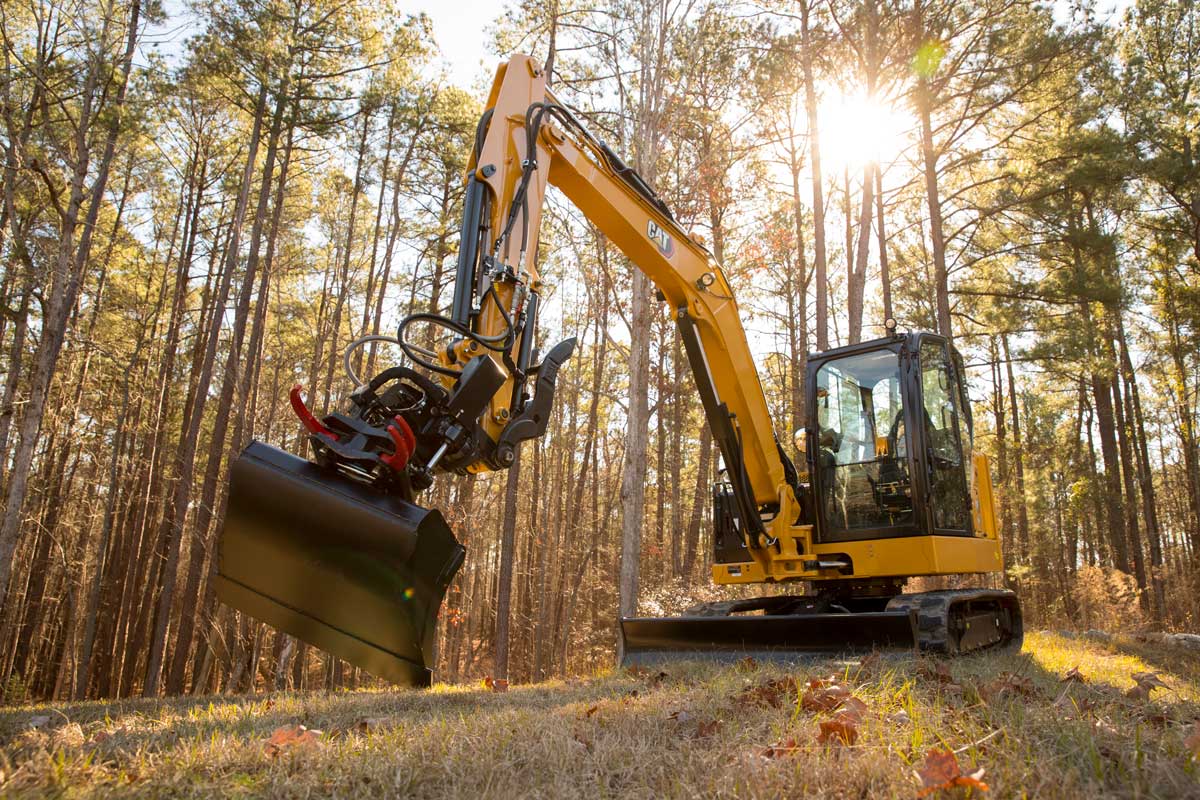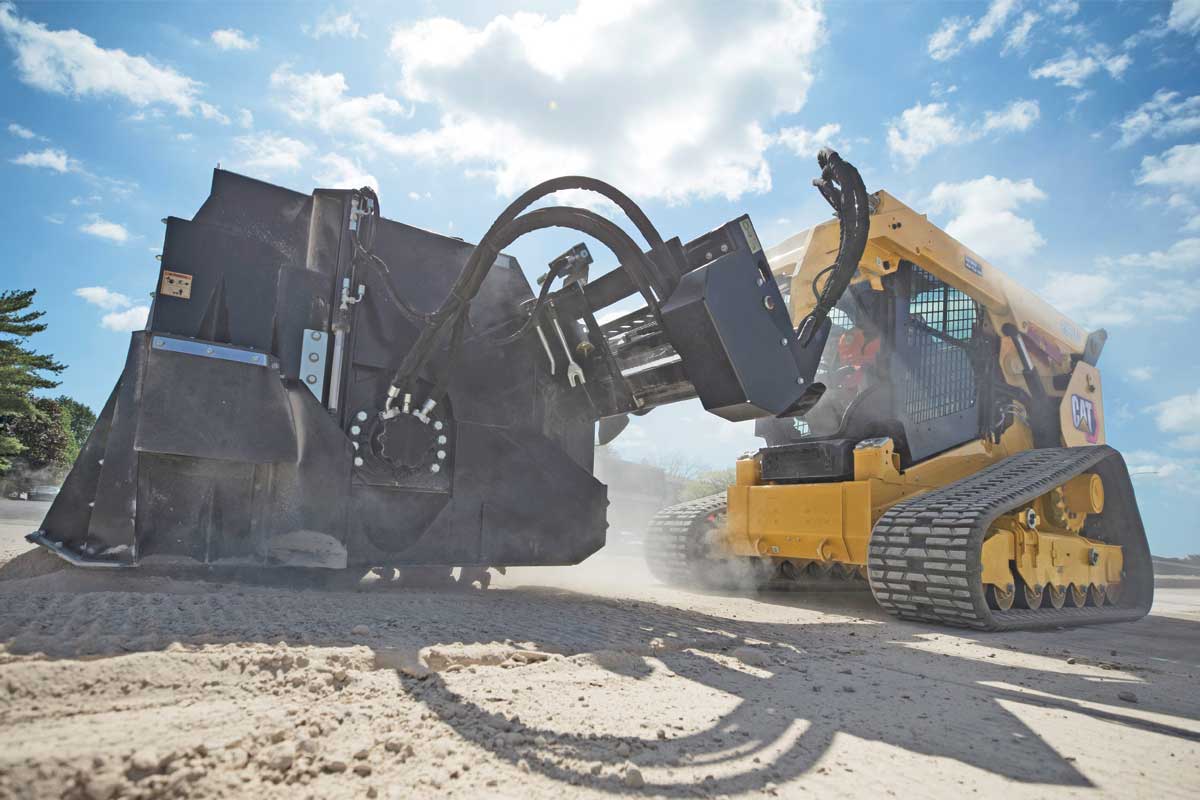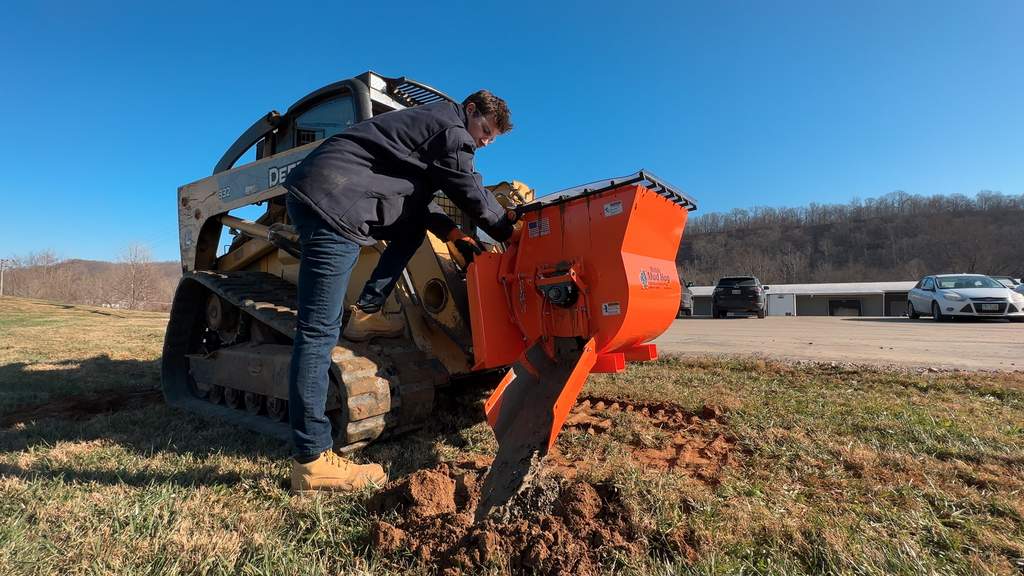SKID STEER – Wheel Loaders Wielding Similar Attachments
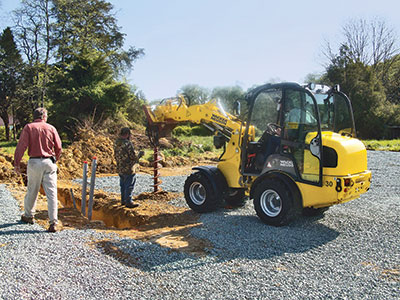
Skid steers are an efficient platform as a prime mover, but in some applications the small wheel loader can prove to have distinct advantages. For example, on a compact wheel loader the operator is positioned higher on the machine and has a 360-degree view of the machine and working area. This allows the operator to see obstacles and makes maneuvering in confined areas easier. This is especially important in applications such as snow removal, which often takes place in populated areas and parking lots.
In addition, to excellent visibility, the compact wheel loader also offers comfortable heated and air conditioned cabs, adjustable seats and ergonomic controls that allow for longer productive operation. Compact wheel loaders are typically 20 to 25 percent higher in initial cost than a similar-sized skid steer, but with up to 30 percent savings on fuel and up to 75 percent on tire life, the cost of ownership is ultimately lower. Plus, it is not uncommon for a compact wheel loader to see as much as 10,000 hours of service life, which is more than a typical skid steer.
A number of adjustments have been made to adapt the wheel loaders to the special requirements of the North American market which tends to be very attachment driven. Traditionally the compact wheel loaders used a hook-and-pin coupler similar to the larger wheel loaders, but recognizing that contractors have a substantial investment into skid steer attachments most manufacturers have migrated the small wheel loaders to a standard skid steer coupler plate. This change allows the contractors to use a wheel loader with his or her current skid steer attachments.
Now that contractors can use their skid steer attachments on a compact wheel loader, there are some factors to consider in order to ensure the best performance. First is bucket dig depth. Most skid steers are set up with a zero dig depth for the bucket. This means when the lift arm is fully lowered and the bucket is rolled out flat, the bucket edge is level with the ground. A compact wheel loader is constructed so in the same position the bucket edge will be 2 to 4 in. below the grade or has a positive dig depth. This dig depth allows the machine to operate a wide variety of attachments from various manufacturers.
In general, compact wheel loaders offer advantages over skid steers for applications and attachments when the machine is moving large amounts of material over a longer distance. The wheel loader’s high travel speeds, long wheel base and high capacities allow it to be effective at moving material in a confined environment.
Considering the excellent visibility, fuel efficiency and operator comfort, there are many hydraulic-powered attachments that can be paired with a compact wheel loader such as snowblowers and brooms. The keys to choosing a hydraulic attachment that will maximize the compact wheel loader productivity are the pressure and flow requirements. The most common question is which is more important, pressure or flow? The answer is really both.
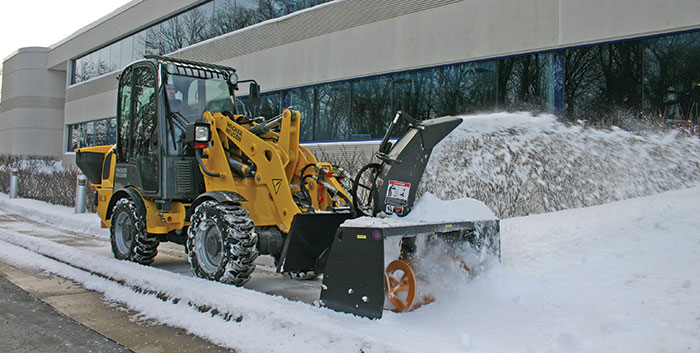
In general, choosing an attachment in the upper end of that attachment’s rated pressure and flow will result in a better performance. In order to select the attachment that will give you the best combination between machine and attachment, the amount of engine horsepower that the machine has in reserve to be used to drive the machine should also be considered. Let’s say that you are putting together a machine and brush mower for clearing a hilly jobsite. If you use an attachment that is consuming almost all the engine horsepower, there won’t be enough engine power to climb the hills.
In this case, let’s say the attachment is using 23 gpm at 2,000 psi — that is 27 hp. If you are using a machine with 47 hp that only leaves you 20 hp to run the cooling fan, alternator, AC and power the machine’s drive. The conditions that you are operating in will determine how much power you can give to the attachment and still have enough engine horsepower to effectively do the job. Depending on the machine’s engine horsepower you might actually need to get an attachment that takes less power to make a better performing combination.
The key to choosing any machine and attachment combination is application. Both skid steers and compact wheel loaders are efficient prime movers and can offer a great value on the jobsite.
Will Wright is a wheel loader product manager with Wacker Neuson, based in Menomonee Falls, Wis.

